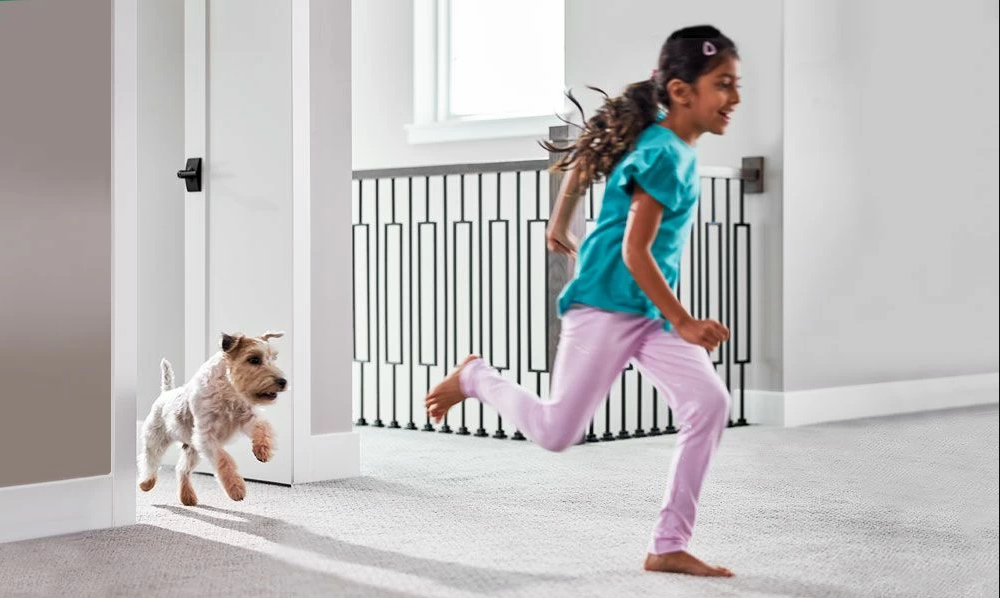
Unmaintained tile will wear and discolor over time. Photo by Abdelhamid Azoui on Unsplash
1. Sweep/Vacuum Regularly
Keeping surfaces free of dirt, dust, and debris isn’t just a move to keep your floors looking tidy; it also protects from long-term damage. Particles left on the floor can cause scratches and abrasions that will fade or damage the surface of the tiles over time. Be careful what you clean with, though. Using a broom with soft bristles or a vacuum is recommended, since stiff or wire bristles can easily scratch surfaces.
2. Clean Spills Quickly
Any spills or messes should be cleaned as quickly as possible. Not only are dried-on messes harder to clean up, they can stain and discolor your floors. As we’re getting into the summer months, spilled fruit juices, dripped popsicles, and dropped candy can leave your tile looking a little more colorful than you might like. Accidents happen, but the sooner they’re wiped up, the better.
3. Protect From Scratches
Of course our homes aren’t just empty rooms, so it’s important to protect furniture as well. Using floor protectors can be an easy way to avoid scratches caused by slight movements in everyday use. Small felt pads are available in most grocery stores, but this author recommends silicone protectors for larger furniture, like couches and beds, since they usually have a cup shape that prevents the protector from sliding out and scratching the floor.
Using floor mats at entryways and in bathrooms is also encouraged, since the mats collect contaminants that could scratch the floor or water that could attract dirt, or even cause slips. Yikes!
4. Pay Attention to the Tile Type
Not all tiles are created equal. There’s a wide variety of styles, sizes, and finishes of tile, so it’s important that you be aware of what kind of tile you have and manufacturer recommendations for cleaning/maintenance. Some of the more common styles are glazed, unglazed, or stone tiles. If you’re going to use a cleaning product, be sure that it is suited for your tile finish and that it has a neutral pH, since acidic cleaners can break down and distort existing finishes. Be sure to apply cleaners with the proper tools as well, since certain chemicals can make surfaces more prone to scratching when scrubbed with an abrasive material.
5. Don’t Forget the Grout
It’s easier to see grime on the flat surfaces of tile, but grout between tiles can also become dirty over time. It can be a breeding ground for bacteria and germs that build up as grime collects. Grout tends to be much more porous and abrasive than tile surfaces, so if you’re careful with your technique you can put a little more elbow grease into spot cleaning. As a word of caution, be cautious to not splash grout cleaner onto tiles, since some acid or bleach- based cleaners can be damaging. Many online sources suggest DIY mixtures that you scrub into grout with a toothbrush, but there’s an easier way.
If you want to restore your tile and grout to its original luster without the headache of sifting through cleaner types, scrubbing on your hands and knees, and spending hours of your free time, give Finn's Chem-Dry a call today. Leave scrubbing floors by hand to Cinderella and enjoy a magic shine by letting Chem-Dry use our proprietary machines that get the job done in minutes!
BACK TO BLOGS

